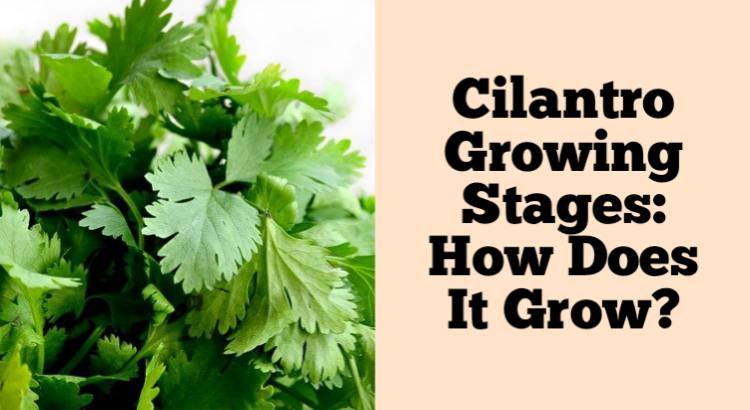Cilantro Growing Stages. Cilantro is a perennial herb that grows abundantly in the summer. It’s best to grow cilantro indoors, with some sunlight coming through your window or skylight. It can also be grown outdoors in a container if you have enough space.
Cilantro is adaptable to many different climates, but it does well in warm temperatures and humidity levels of between 50% and 60%.
You’ll want to water your plants about once every 10 days when they’re first planted out into their final location, but after that, you can set them up for automatic watering systems or give them just an occasional misting from time to time.
Cilantro Growing Stages
Stage 1: Germination
You will need a sunny spot, soil and compost, water, and a container. The seeds of cilantro are small and brown in color.
The seeds will germinate in about a few days. Tiny roots will and a few leaves will come out of the seeds and eventually they will grow taller as the day passes by.
Stage 2: Growing the Seedlings
At this stage, the germinated cilantro seeds will become seedlings. This is a good time to check for pests and diseases that could affect your plants later on.
Once the roots are established, you can start watering them regularly and fertilizing them with a high-potassium fertilizer (usually found in nurseries).
Once your plants are established in their new home and growing well, it’s time for step two:
Stage 3: Transplanting the Cilantro Plants
You can transplant your cilantro plants any time of day, but they’re best transplanted in the morning.
To transplant your cilantro plants:
Dig a hole where you want to plant the cilantro and loosen the soil around it by digging with a garden fork or hoe until you feel some roots poking out of the ground.
If there are no roots visible, continue digging until you find them; this will help prevent rotting or disease from developing on old roots that have grown into compacted soil over time.
Once you have removed all chance of root rot, carefully place each individual plant into its new home—it should be about 3 inches apart from other plants—and water well afterward so that any dirt clods settle back into place around their base (you don’t want them falling over).
Stage 4: Harvesting Cilantro
The cilantro is ready to harvest when the leaves are tender green and they are around 6-8 inches tall.
To harvest, cut off all of the leaves from one plant and put them in a plastic bag or container. You can use this for cooking later on or just eat it fresh.
Once you have finished harvesting all of your plants, it’s time to pickle them. Pickled cilantro lasts up to six months in vinegar with an added acid such as lemon juice.
However, if you want longer-lasting results (and more flavor), try making brine with pickling spices like garlic cloves or onions instead.
Stage 5. Flowering And Seed Production
After the cilantro plants reach their maturity stage they will produce flowers. The flowers of cilantro are small and white in color.
A single plant can produce a lot of flowers and these flowers will eventually turn into seeds. The flowers are pollinated by the pollinators like bees. The seeds can be collected once the flowers have been dry.
Growing cilantro is extremely easy as long as you know all the stages.
Cilantro is one of the easiest herbs to grow. It’s also a great herb to have in your garden and can be grown either in containers or directly in the soil.
Cilantro grows best at around 55-65 degrees Fahrenheit, so if you live somewhere cold where it freezes all winter long, then this may not be for you.
Conclusion: Cilantro Growing Stages
The next time you are looking for some fresh cilantro for your dishes, remember that it can be grown almost anywhere. So now that we have the basics covered, here’s a list of some great places to start growing it yourself.
Cilantro life cycle starts from a seed and goes into several stages of growth.

